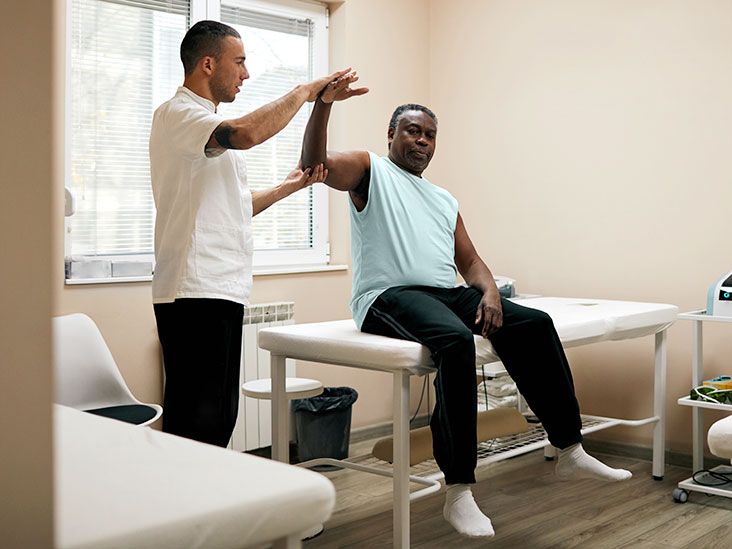Exactly How Physical Specialists Assist in Injury Rehabilitation
Physical therapists play a crucial function in injury recovery, using their know-how to help patients in their healing journey. The initial step entails examining the nature and degree of the injury, which allows the physical therapist to develop a customized therapy plan tailored to the person's details demands. Furthermore, physical therapists give education and learning on injury prevention and self-management, encouraging clients to take an energetic function in their recovery procedure.
Examining the Injury and Developing a Therapy Strategy
To accurately assess an injury and develop an effective treatment strategy, physiotherapists systematically review the degree of the injury and its influence on the patient's useful capabilities. This assessment process is crucial as it enables the physical therapist to collect objective data and information about the injury, allowing them to make enlightened decisions regarding the appropriate therapy interventions.
During the assessment, physical therapists use a range of devices and strategies to collect details regarding the injury. In enhancement, physical therapists may examine medical documents, analysis imaging records, and various other relevant records to get a comprehensive understanding of the injury.
Once the assessment is full, physiotherapists make use of the gathered info to create an individualized therapy prepare for the person. This plan might include healing workouts, hand-operated therapy techniques, methods such as warmth or cool therapy, and education on injury prevention and self-management approaches. The therapy strategy is tailored to deal with the particular requirements and objectives of the individual, aiming to recover their functional abilities and improve their overall high quality of life.
Making Use Of Manual Therapy Techniques
Physical therapists utilize handbook treatment methods to address the certain needs and goals of damaged individuals, improving the performance of their therapy plans. Manual treatment involves hands-on strategies that intend to enhance wheelchair, lower discomfort, and advertise recovery. These strategies are based on an extensive understanding of composition, physiology, and biomechanics, allowing specialists to target specific locations of the body with precision.
One typically made use of hand-operated treatment technique is joint mobilization. This method entails the knowledgeable application of pressure to a joint, intending to recover its normal series of activity. By delicately setting in motion the joint, physiotherapists can alleviate rigidity, improve flexibility, and lower pain.
Soft tissue mobilization is an additional hand-operated therapy technique frequently used by physical specialists. This strategy entails applying stress and motion to muscles, ligaments, ligaments, and other soft cells to enhance blood circulation, reduce muscle mass tension, and promote healing.
Additionally, manual treatment strategies such as massage and extending can aid loosen up muscular tissues, improve adaptability, and boost overall function (orthopedics Roanoke). These methods are typically integrated with therapeutic exercises and other therapy techniques to accomplish optimal results
Creating and Supervising Custom-made Exercise Programs
Structure upon the hands-on treatment techniques reviewed earlier, physical specialists utilize their competence to style and manage customized workout programs for injured people. These exercise programs are tailored to the certain needs and capacities of each person, thinking about their injury, case history, and general objectives for recovery.
The initial step in developing a personalized exercise program is to conduct a complete analysis of the individual's problem. Physical specialists will certainly examine the person's stamina, flexibility, array of activity, and practical capacities. This analysis assists them identify any type of areas of weakness or imbalance that need to be attended to via targeted workouts.
As soon as the analysis is total, the physiotherapist will design a workout program that consists of a selection of workouts targeting different muscle groups and activity patterns. These exercises may consist of extending, reinforcing, equilibrium training, and cardiovascular activities. The specialist will likewise think about the client's preferences, way of life, and available resources when designing the program.
When the exercise program is developed, the physiotherapist will lead the patient with each workout, guaranteeing appropriate type and method. They will provide guidance and support, making modifications as needed to make sure the workouts are challenging but not also difficult. The therapist will also track the person's development and make adjustments to the program as the individual's capacities boost.
Providing Education on Injury Prevention and Self-management
Additionally, physiotherapists educate injured people on Check This Out injury avoidance and self-management methods. This element of their duty is vital in helping patients understand exactly how to avoid future injuries and handle their current problem effectively. By supplying education on injury avoidance, physical therapists equip people with the knowledge and tools essential to reduce the risk of re-injury. They teach appropriate body mechanics, right stance, and safe methods for engaging or carrying out day-to-day tasks in sports and exercises. With this education and learning, clients find out how to shield their bodies and avoid tasks that may worsen their problem.

Furthermore, physical therapists educate patients on the importance of adherence to their treatment plan. They explain the reasons behind each intervention and the anticipated outcomes, ensuring that people recognize the purpose and advantages of their treatment. By encouraging individuals with this expertise, physical specialists motivate active participation in their own recuperation procedure, promoting a sense of ownership and responsibility for their health.
Surveillance Progression and Adjusting Therapy as Needed

Physiotherapists make use of numerous approaches to monitor progress. They assess the person's array of activity, toughness, versatility, and general functional abilities. They might additionally utilize specialized tests and measurements to track enhancements and determine areas that call for more interest.
By closely monitoring the progress, physiotherapists can determine any possible barricades or difficulties that may emerge throughout the rehabilitation procedure. This enables them to make timely changes to the treatment plan, making certain that the treatment stays efficient and pertinent to the individual's requirements.
Adjustments to the therapy plan might include modifying workouts, enhancing or lowering the intensity of therapy, or presenting new strategies or modalities to resolve particular locations of issue. The objective is to optimize the recovery process and assist in a quicker and more total recovery for the individual.
In addition to keeping an eye on progression and adjusting treatment, physical specialists also supply recurring education and assistance to their people. This helps them comprehend their problem better, promotes self-management, and encourages them to proactively get involved in their own healing.
Verdict
To conclude, physical therapists play a crucial function in injury rehab. They analyze injuries, develop treatment plans, make use of hand-operated therapy techniques, style personalized more tips here workout programs, provide education on injury prevention and self-management, and screen development. Via their knowledge and support, physiotherapists aid people recoup from injuries and gain back ideal function and wheelchair.
